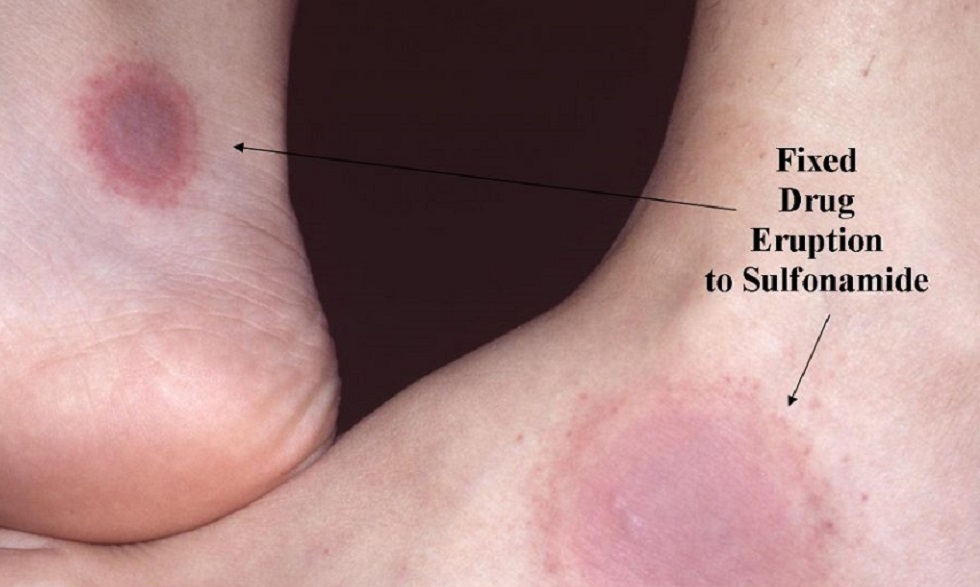Drug Eruptions

WHAT IS DRUG ERUPTIONS
Drug eruptions associated with hives are called urticarial drug eruptions. These present as edematous, flat, erythematous papules that usually last less than 24 hours. New lesions appear almost continuously 20–28 The lesions may begin as small discrete papules that become confluent, large, figurate plaques. Occasionally, the edema can be so intense in the center of the erythematous papules and plaques that the center appears less erythematous than the periphery, giving a target appearance. Lesions may resolve, leaving a macular blue-brown appearance that looks like a bruise. The absence of epidermal injury and more typical urticarial papules and plaques on the rest of the body confirm that this is an urticarial drug eruption and not erythema multiforme. Box 20.4 lists the drugs associated with urticarial drug eruptions.
If the lesions show a deep extension with induration and swelling of the subcutaneous tissue, the reaction is called angioedema. If angioedema involves the mucous membranes, it can become life threatening secondary to airway obstruction.
One variant of urticaria is the serum-sickness-like reaction that clinically initially appears to resemble urticaria, often accompanied by angioedema. The child may develop fever, pruritus, arthritis, and/or arthralgias. As in urticaria, the large plaques may resolve with dusky to purple centers, giving the skin a bruised appearance. The affected child may appear severely ill and be very uncomfortable. Cephalosporins are most commonly reported to cause this type of drug eruption.
